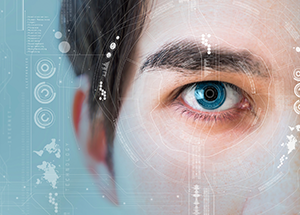As students head back to school in the coming weeks, they may have to adjust to more than new teachers and piles of homework. Many will encounter beefed-up security procedures – adding school resource officers or new access control or video surveillance and facial recognition technologies designed to keep them safe.
This year’s tragic school shootings in Parkland, Florida, and Santa Fe, Texas, have prompted a fresh wave of security upgrades in school districts across the country.
Florida recently passed legislation allowing school districts to train employees – excluding full-time teachers – as armed marshals on school campuses. Districts in Kentucky and Indiana will start using metal detectors to screen staff, students and visitors at entry points. And a school district in Lockport, New York, near Buffalo, has taken an unusual step. It’s currently upgrading its surveillance system to employ facial recognition technology.
Government agencies, airports and casinos have relied on facial recognition technology for years, but its use in protecting schools is fairly new. Will it gain traction in this uncharted market? That will depend greatly on costs, performance and community acceptance.
How Does Facial Recognition Technology Work?
In Lockport, the City School District is installing 300 facial recognition cameras across ten facilities at a cost of $1.4 million. The technology, created by Ontario-based SN Technologies, checks every face against a database of expelled students, sex offenders, disgruntled former employees and other potentially problematic visitors. It can also identify commonly used firearms. If a person of interest or weapon is detected on school property, the system immediately notifies school and security personnel.
Another supplier, Seattle-based RealNetworks, has directly targeted school administrators with its technology. The company offers a free version of its SAFR facial recognition system to any K through 12 school in the U.S. or Canada. The technology integrates with a school’s existing IP (internet protocol) cameras and encrypts all facial images to ensure privacy. Schools can decide who they will register and customize their emergency response procedures. In a Seattle school where SAFR was piloted, for example, parents have the option to register their faces so they can obtain automatic access through a locked gate.
Recently bought by Canon, Briefcam software not only recognizes faces, but can quickly search video footage using terms such as “man with beard” or “woman in red” to narrow the results. The city of Springfield, Massachusetts, has invested in 1,000 surveillance cameras enhanced with Briefcam technology – many to be housed at its nearly 60 public schools.
Concerns About Facial Recognition Technologies
Although facial recognition technology has an established track record in several markets, no system is perfect. Just last year, the FBI explained its facial recognition system offers an 85 percent chance of correctly identifying a person from a group of 50 choices.
The technology can also exhibit inconsistencies. A Massachusetts Institute of Technology study showed commercial software can identify the gender of a person in an image 99 percent of the time if it’s a white male and only 65 percent of the time if it’s a darker-skinned woman. And, children pose an extra challenge since their faces change dramatically as they progress through puberty.
Facial recognition technology also raises concerns about privacy. Federal laws don’t restrict its use, and only two states, Illinois and Texas, require companies to get prior consent before collecting facial images.
Since technology users have the freedom to set their own policies, privacy rights advocates have raised serious questions about who has access to the data. The New York Civil Liberties Union objected to the project in Lockport, feeling it would do more harm than good and brand certain students as potential criminals. The organization filed a complaint, asking the state education department to block the technology from any New York school. The request is under review.
A Realistic Approach to School Security
Like any school security technology, facial recognition won’t serve as the ultimate solution on its own. But it may prove highly effective if it’s part of a more comprehensive school security plan. While it may not stop a determined attacker single-handedly – especially if that person isn’t included in the system’s blacklist database – it may make a big difference working in concert with access control, secure entryways, safety training and a strong safety culture.
“There’s no system that’s going to solve every problem,” Robert LiPuma, Lockport City School District’s technology director, explained in Campus Safety Magazine. “It’s another tool that we feel will give us an advantage to help make our buildings and our communities a little safer.”


